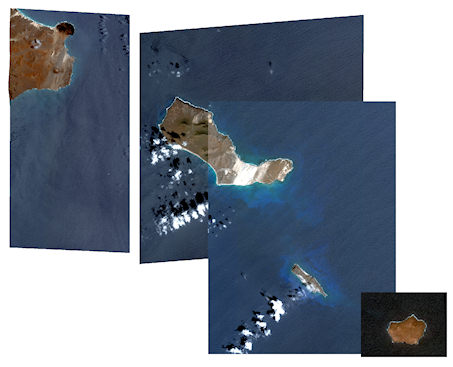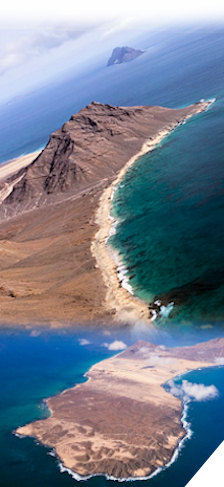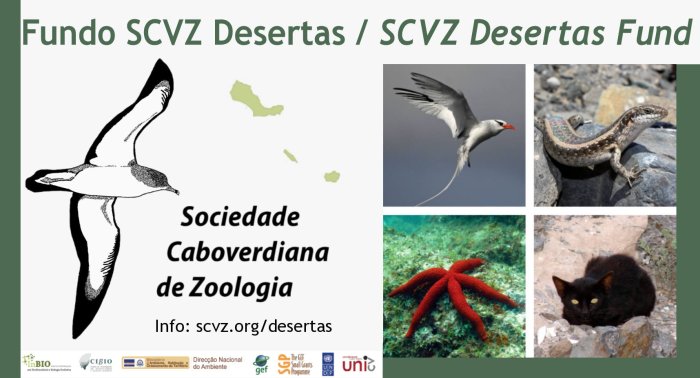
PROJECTO: Teste da metodologia de translocação da cagarra-de-cabo-verde Calonectris edwardsii no ilhéu Raso para uma futura reintrodução da espécie em Santa Luzia
CANDIDATA: Isabel Rodrigues (Biosfera I)
RESUMO Numa primeira fase de estudos da biologia da cagarra Calonectris edwardsii, verificaram-se características específicas das cavidades usadas para nidificar, sucesso reprodutor e dieta. Seguidamente realizou-se no ilhéu Raso um teste da metodologia de translocação de crias, antes da reintrodução da espécie em Santa Luzia, ilha onde ocorria antes da extinção por acção humana. O estudo teve como principal objectivo verificar o efeito de nichos artificiais no crescimento das crias e o sucesso dos métodos utilizados durante o desenvolvimento das crias e abandono do ninho. Em Outubro de 2017 foram construídos 10 ninhos artificiais, os quais foram ocupados com crias translocadas bem desenvolvidas para facilitar o trabalho de alimentação, que nessa época ocorrem em menor frequência. Desta forma as crias foram somente alimentadas durante a noite e monitorizado o desenvolvimento das mesmas. Foram utilizadas 4 espécies de peixes – sargo Diplodus lineatus, cavala Decapturus macarellus, melãozinho Selar crumenophtalmus, tainha Chelon bispinosus – e uma de molusco, polvo Callistoctopus macropus. Sendo a cagarra uma espécie generalista, não houve quaisquer diferenças significativas comparativamente às crias dos ninhos naturais no sucesso de voo, que foi de 100 %, nem na curva de crescimento (peso, comprimento da asa e tarso).
PROJECT: Translocation test methodology of Cabo Verde Shearwater Calonectris edwardsii on Raso Islet for future reintroduction in Santa Luzia
CANDIDATE: Isabel Rodrigues (Biosfera I)
SUMMARY In a first study phase of the biology of the Cabo Verde shearwater Calonectris edwardsii, specific characteristics of the breeding cavities, breeding success, and diet were verified. Later a test of the methodology of translocation of chicks was carried out on the Raso Islet, before reintroduction of the species on Santa Luzia, where it occurred before the extinction by human action. The main objective of the study to verify the effect of the artificial nests on the chicks’ growth and the success of the methods used during their development and abandonment of the nests. In October 2017, 10 artificial nests were built and occupied with well-developed chicks to facilitate the feeding work, which at this stage already occurs less frequently. In this way, the chicks were only fed at night and their development was monitored. Four species of fish were used – white seabream Diplodus lineatus, mackered scad Decapturus macarellus, bigeye scad Selar crumenophtalmus, Cabo Verde mullet Chelon bispinosus – and 1 mollusc, octopus Callistoctopus macropus. As a generalist species, there were no significant differences in flight success comparing to the chicks of the natural nests, which was 100%, nor in the growth curve (weight, wing and tarsus length).
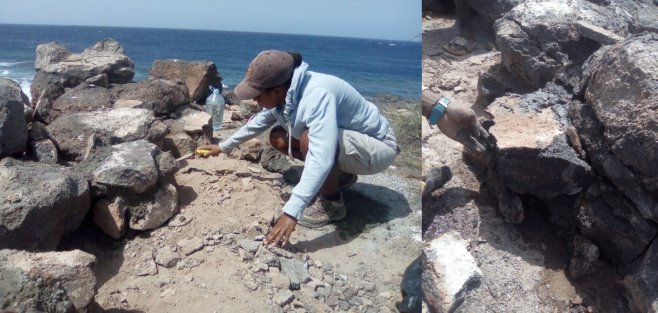
Fig. 1 – Construção de ninhos artificiais no ilhéu Raso (Foto: Kenny Delgado). | Construction of artificial nests on Raso Islet (Photo: Kenny Delgado)
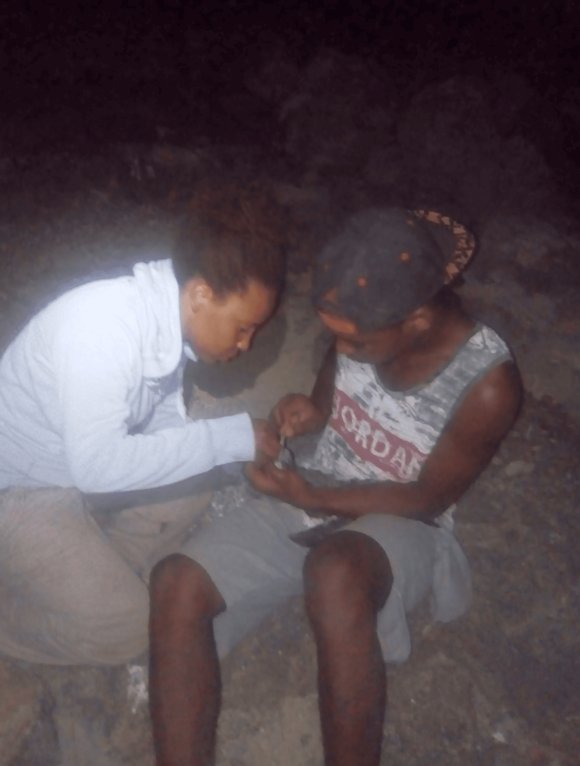
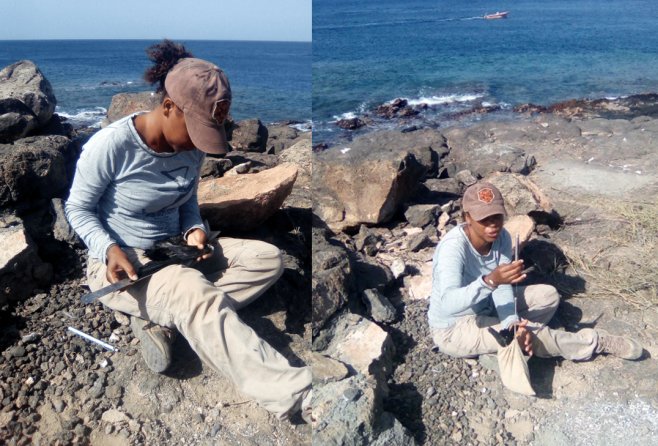
Fig. 3 – Recolha de dados biométricos (asa e peso) das crias no ilhéu Raso (Foto: Kenny Delgado). | Collection of biometric data (wing and weight) of chicks on Raso Islet (Photo: Kenny Delgado).
